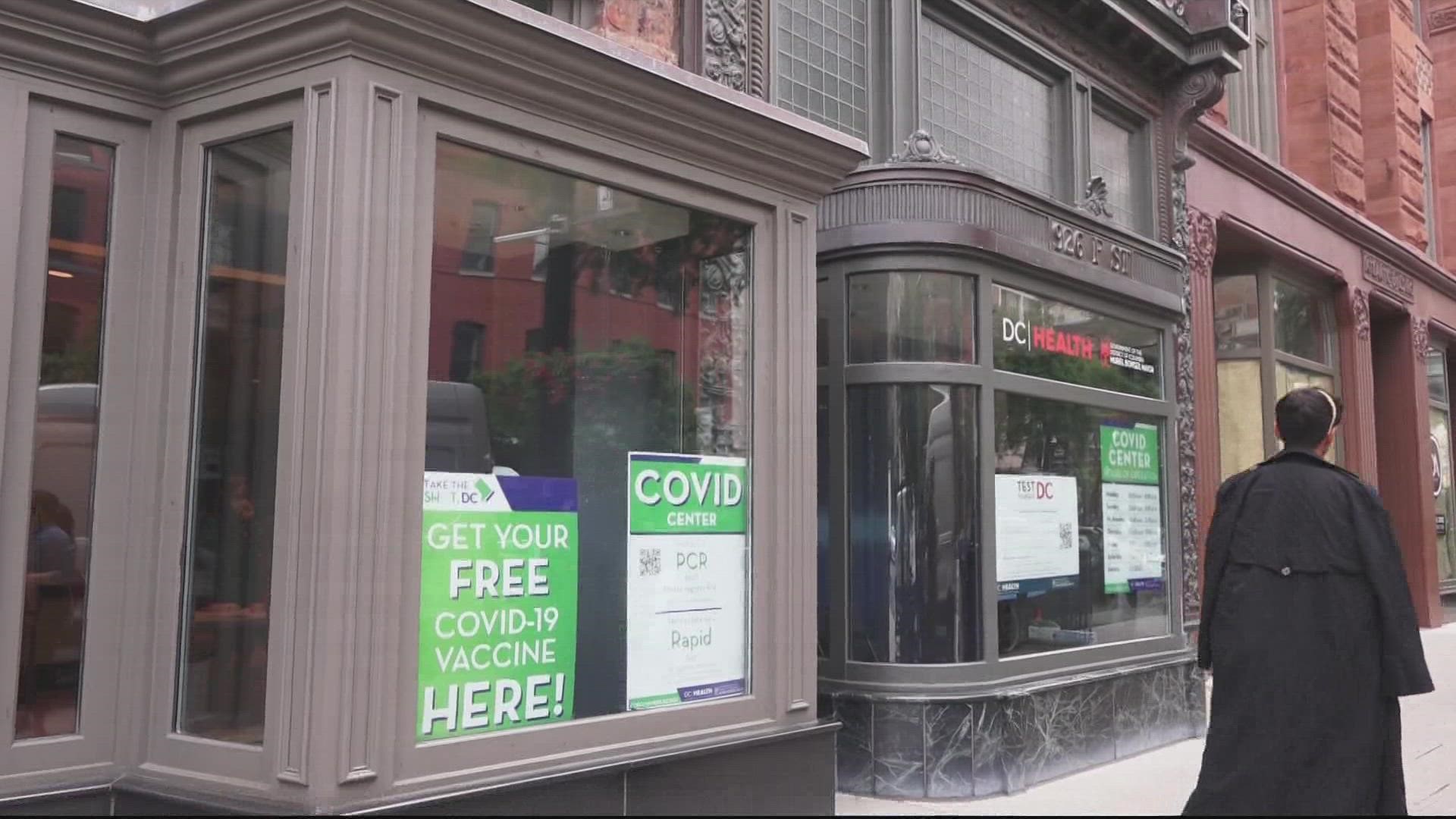KNOXVILLE, Tenn. — On Thursday, the Centers for Disease Control updated their information and said most of East Tennessee back down into the "medium" risk category, including Knox County. It was previously in the "high" risk category.
The CDC recommends that people living in counties with a "medium" risk level wear a mask if they have symptoms, a positive test, or if they were exposed to someone with COVID-19. They also say people can choose to wear a mask more often for additional precaution. People at high risk for severe illness should also wear a mask inside public areas, they said.
Some East Tennessee counties remained in the "high" risk category on Thursday. The CDC recommended that people in those counties wear masks indoors while in public, and while on public transportation.
A full list of counties and their risk levels are available below.


High-Risk East TN Counties (Masks recommended in public indoors)
- Claiborne County
- Hawkins County
Medium-Risk East TN Counties (Extra precautions for those with high-risk conditions)
- Knox County
- Monroe County
- McMinn County
- Meigs County
- Roane County
- Loudon County
- Blount County
- Morgan County
- Anderson County
- Union County
- Campbell County
- Scott County
- Hancock County
- Hamblen County
- Greene County
- Fentress County
Low-Risk East TN Counties
- Rhea County
- Cumberland County
- Grainger County
Last month, the CDC also relaxed a few more COVID-19 recommendations that had been in place since the start of the pandemic two and a half years ago, including dropping its quarantine rules for people who come in close contact with someone infected with COVID-19. The CDC is no longer recommending schools implement "test-to-stay" policies now that it has dropped the quarantine recommendation.
The CDC also removed guidance on social distancing, which recommended people to stay at least 6 feet apart and stick to small groups.
The CDC uses the three-tiered system to gauge the risk COVID-19 has on an area -- particularly on local hospital capability -- by comparing seven-day community spread with hospital admissions and bed availability. The CDC stopped using base "community transmission" levels in early 2022 as its primary risk indicator, saying those levels now are only provided to help healthcare facilities determine infection control measures.
New COVID-19 boosters that target today's most common Omicron strains are also set to begin soon after the CDC endorsed the updated shots on September 1.
The tweaked shots made by Pfizer and rival Moderna offer Americans a chance to get the most up-to-date protection. They’re “bivalent” shots — half the original vaccine and half protection against the BA.4 and BA.5 omicron versions now causing nearly all COVID-19 infections.

